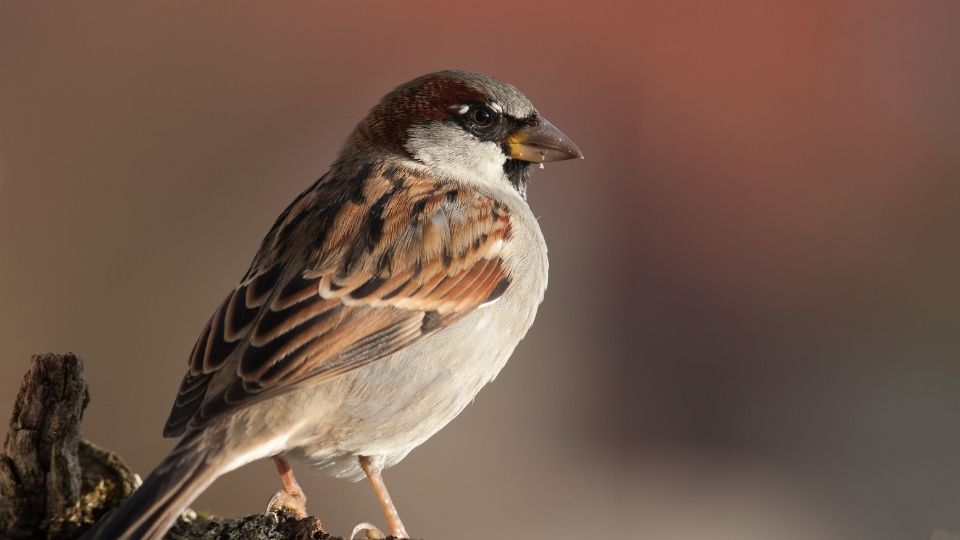House sparrow populations have exploded since they were introduced to North America in the 1850s. This songbird species was introduced in New York to control the spread of the Linden Moth caterpillar, eventually migrating across the entire continental US in a relatively short time.
Sparrows often outcompete other songbirds for food, shelter, and valuable resources. They drive away other songbirds and can be messy if they roost on your porch or other entryways.
No one wants droppings all over their porch or a territorial and noisy sparrow on their property.
So if you are looking for how to get rid of Sparrows, here’s what you can do to prevent them from nesting around your house, and what to do when nothing else works.
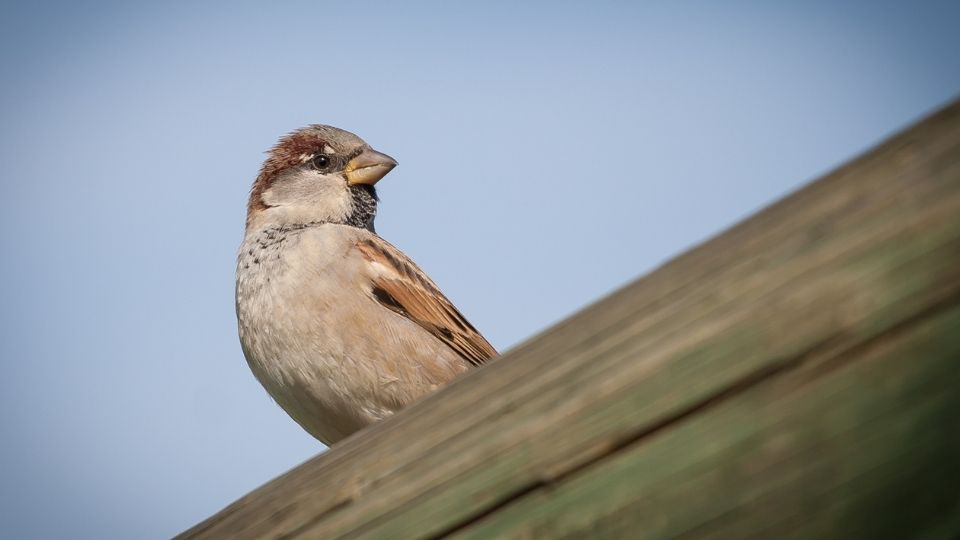
What will scare sparrows away?
Sparrows are easily frightened and quick to flee from any perceived threats. Using visual and audio deterrents
This makes scare tactics a highly effective method of bird control.
While scary for the little bird, they are mainly harmless and should be your first step in getting rid of sparrows.
Visual deterrents are common and can be purchased at most retail stores with an outdoor section.
Hawk decoys are excellent for deterring sparrows since the hawk is a sparrow’s natural predator.
Choosing a hawk decoy with a motion-activated hawk call is even more convincing and should keep sparrows out of your yard.
Sparrows also hate shiny surfaces that catch the sun and create a visual distraction. Shiny silver streamers specifically for deterring sparrows can be hung from trees and your home, creating a sparrow-free zone.
Using a sparrow distress call on a loop is another way to send sparrows fleeing for safety.
Many grocery and retail stores successfully use audio distress calls on loop. The only downside is that the calls are often loud and must constantly play to be effective.
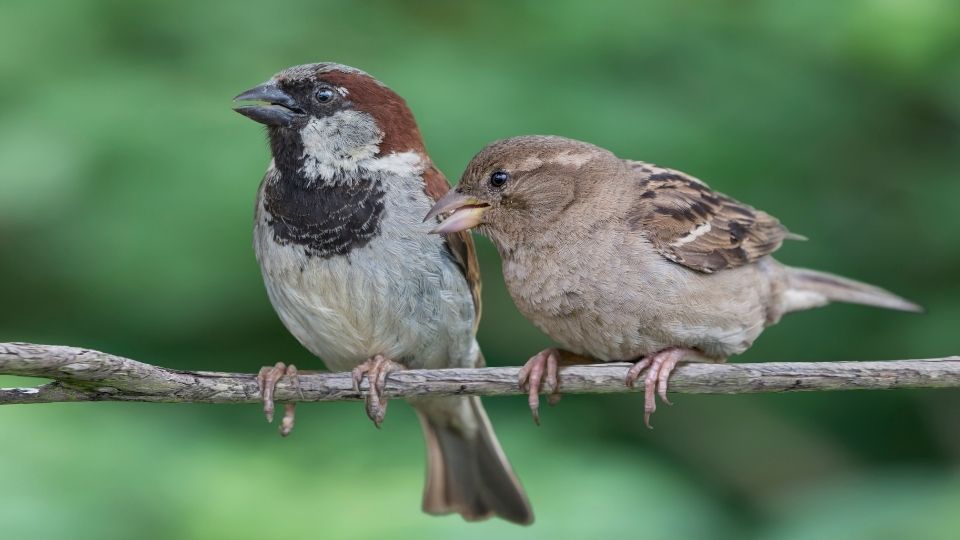
Why are there so many sparrows around my House?
The simple answer? Food. Anytime an animal has ample access to food, it will return until the food is gone.
Since their introduction to North America, the house sparrow has evolved to eat almost anything. You’ve probably seen them swiping food from outdoor eateries and even stealing livestock feed from cattle!
The house sparrow is an aggressive species that will take over the nesting sites, territories, and food sources of native birds.
The best method to getting rid of House Sparrows is by avoiding the use of common bird seeds that may attract them in the first place. Grain, millet, and cracked corn will attract House Sparrows more than the other songbirds you may be trying to lure.
But what if this doesn’t work? Don’t be discouraged. It often takes more than removing food to convince the Sparrow to move on.
Like many invasive species, they are challenging to handle, especially if you’re hoping to keep other songbirds around.
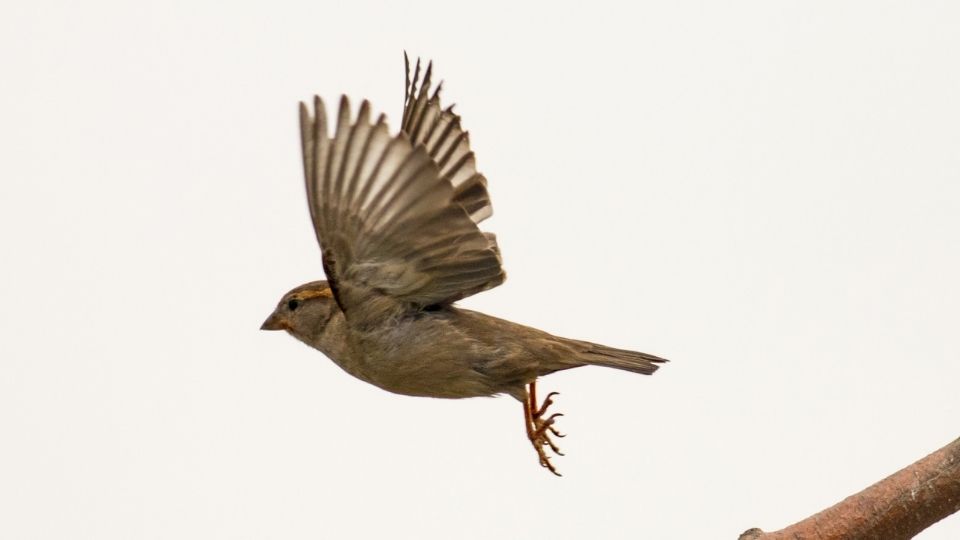
What can I do to prevent sparrows from coming to my House?
Start by deterring house sparrows from nesting. They will move on quickly if they have nowhere else to raise baby birds.
You can take several steps to prevent House Sparrow from invading your yard and your songbird nesting boxes.
Use bird netting. Block sparrows from building a nest in open areas by placing bird netting on your leaves, and elsewhere sparrows have nested. Choose a mesh size of no more than ¾”; otherwise, smaller birds may pass through or get entangled.
Check your bird netting often to ensure nothing is trapped in the mesh. The smaller the mesh, the less likely small birds, lizards, and snakes will get caught in the net.
A bird repellent gel is another popular option. The sticky gel can be used to treat ledges and rafters.
By preventing birds from landing on horizontal surfaces, it will keep sparrows from sticking around long enough to forage for food and possibly building a nest.
Bird repellent gel should not be used around protected bird species. If the sparrows have run off other songbirds, it’s okay to use repellent gel as a form of sparrow control.
Keep in mind the gels can last for up to six months.
How can I support native bird species and still get rid of sparrows?
Supporting native bird species is an effective way of getting rid of sparrows. By making your backyard ideal for a variety of songbirds, you ensure native birds outcompete the invasive house sparrow.
So, how do you do that?
Start with food. Native birds like a wide variety of food, including seeds, fruits, and insects. Keeping your yard planted and healthy with native plant species is excellent for wild songbirds. Avoid chemicals or poisons to keep these food sources safe.
Offering food sources through feeders is also suitable for native birds.
Nectar, nuts, suet, and high-fat seeds are good bird feeder choices. Sparrows prefer seeds and grains. Any food you can offer without these ingredients will make a sparrow lose interest.
Continue to offer native songbirds a variety of foods year-round. Supporting their nutritional needs will help native songbirds overcome the effects of house sparrow infestations.
Where should I put birdfeeders to keep sparrows away?
The placement and types of bird feeders you use are also crucial in combating House sparrow infestation.
Using a sparrow-proof bird feeder will prevent sparrows from stealing native songbird food.
House sparrows are ground foragers, so regularly clean the spilled bird seed off the ground. When choosing a hanging bird feeder, avoid platform feeders, which sparrows will use if there is no seed on the ground. When you remove these feeder styles, House Sparrows cannot access the food.
Clinging mesh feeders, socks, or tube feeders are excellent choices for sparrow-proofing your feeders.
Make sure the perches are shorter than 5/8″ since House Sparrows cannot perch easily on anything shorter.
Modifying the feeder’s height is another way to discourage sparrows from sticking around. Sparrows are ground feeders and prefer a height of under 5 feet. Putting your bird feeder 5-10′ in height and using a native bird diet will significantly deter sparrows.
Limiting water access will help deter sparrows but may also deter other birds.
If your feeder height is adjusted and the birdseed changed, limiting water shouldn’t be necessary outside of extreme invasions of House Sparrows.
How do I keep Sparrows out of my garden?
Install decoys in your garden to keep sparrows away. Predator kites are kites shaped like birds of prey with wings spread. They are life-size and come with stakes, so they are easily installed.
While many are lifelike, some are brightly colored and threatening, frightening birds even if they don’t recognize a specific predator.
You can also use fake owl decoys and small mesh netting to cover your garden. Just remember sparrows are ground feeders, so any netting installed will need to be attached securely to the ground.
Moving nest boxes to isolated areas is another way to deter house sparrows. Since house sparrows have evolved to live near humans, they will shun boxes in remote areas.
Your nest boxes should be closer to wooded areas than houses and other buildings.
Since they are not a protected species in the United States, physically removing house sparrow nests or eggs from nest boxes is also a legal option.
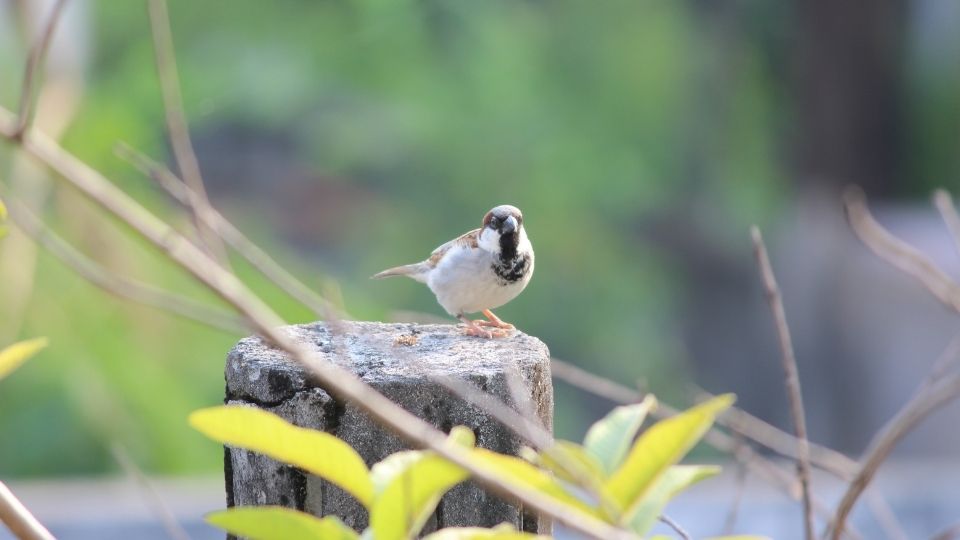
What smell deters sparrows?
Smells are more effective at drawing birds in than deterring them. There are a few scents known to deter birds.
Garlic, cayenne pepper, and professional deterrents are highly effective when combined with food removal and decoys.
Unfortunately, those same smells will deter other songbirds. If you’re looking to get rid of sparrows and create a backyard oasis for songbirds, focus on supporting native birds instead.
Foods such as suet, peanuts in the shell, jellies, and nectars will bring songbirds in droves but hold no interest in sparrows.
What if the sparrows still won’t leave?
Consider using a sparrow trap if you’ve tried everything else and still find yourself overrun with sparrows.
Ground cages with bait can be used to catch sparrows. Place white bread, millet seed, and sparrow feathers to attract the house sparrow’s attention.
These traps work best when a decoy sparrow is placed in the trap to entice sparrows. Once they’re in the trap to investigate the fake bird, the trap springs, and there are safely caught.
The only real issue with trapping Sparrow is that you must release them somewhere, just making your House Sparrow someone else’s problem.
Make sure you consult your local animal welfare office or a pest control specialist before releasing your trapped sparrows away from your property.

